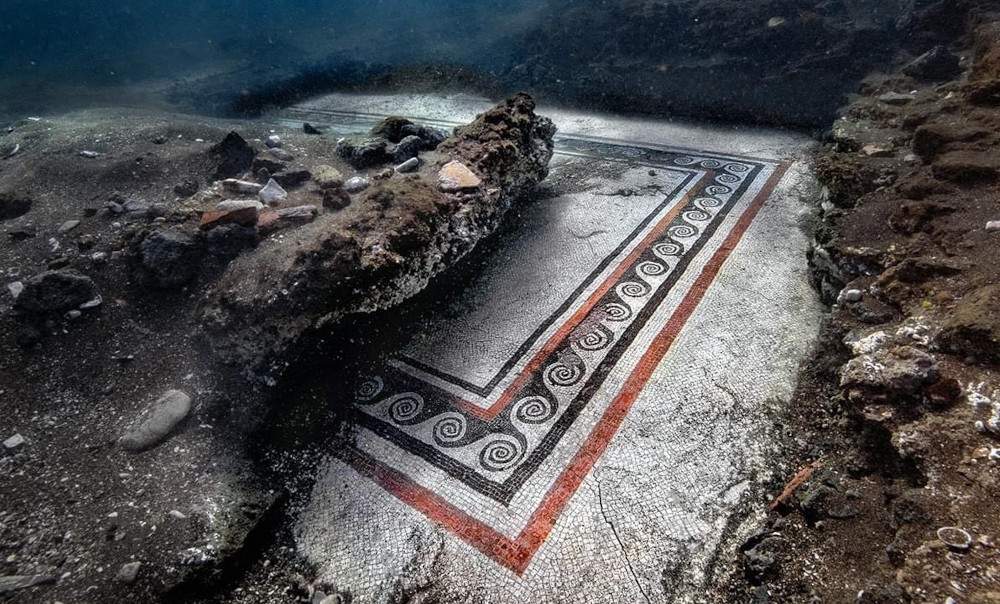At the Submerged Archaeological Park in Baia, an ancient mosaic that seemed lost has resurfaced after 40 years
Forty years after its first discovery, an ancient wave-framed mosaic in black and pink tiles on a white background that decorated a room in the Portus Julius has resurfaced in the Underwater Archaeological Park of Baia.
In fact, the mosaic was first found almost 40 years ago and became one of the highlights of the Park, reproduced on guidebooks and brochures. Then due to changes in the seabed, with the disappearance of posidonia and increasing sand levels, traces of it were slowly lost, disappearing.
The news was given on the socials of the Submerged Archaeological Park of Baia and by the team of the Centro Sub Campi Flegrei, adding that “the research conducted for two years now on this extraordinary site has not only led us to rediscover it, but is showing us a sequence of environments hitherto unknown of which we are trying to understand the form and function. Are we looking at the first constructions intended by Agrippa?” The goal for 2023 will therefore be to accompany us among these spaces.
The Portus Julius was built in 37 B.C. by Marcus Vipsanius Agrippa at the behest of Octavian and initially had the function of a naval military base. The Roman harbor was rediscovered in 1956, and thanks to aerial photos and underwater surveys, a submerged complex was revealed, the layout of a street passing between the remains of two parallel rows of port warehouses, with elevations of opus reticulatum masonry, plasterwork, wooden formwork, plumbing systems, and then a larger building with an orientation different from all the other structures, arranged obliquely, with mosaic floors.
“Wonderful! It is an intact mosaic on the Bacoli seabed,” Bacoli Mayor Josi Della Ragione commented enthusiastically. “It comes back to light after 40 years. A treasure of Baia, the Pompeii underwater. Framed in waves, in black and pink tiles on a white background. A rediscovery. After it had remained covered by sand and posidonia. Most likely, it decorated a room in the Portus Julius. The research conducted by the Archaeological Park of the Phlegraean Fields, now for two years, on this extraordinary site has not only led us to rediscover it, it is showing us a sequence of rooms hitherto unknown. And of which we are trying to understand form and function. We are a rich city of enormous splendor. But the most valuable heritage is along the coast, underwater. The Underwater City of Baiae. The city of Roman times. A place of rest, luxury and entertainment for the most powerful men and women of the Empire. The largest Archaeological Park in the Maditerranean. Among the most important in the world. And it continues to give us sensational discoveries. I thank director Fabio Pagano, and the whole team. Together, we make the Phlegraean Fields shine. One step at a time.”
Photo by Pasquale Vassallo.
 |
| At the Submerged Archaeological Park in Baia, an ancient mosaic that seemed lost has resurfaced after 40 years |
Warning: the translation into English of the original Italian article was created using automatic tools. We undertake to review all articles, but we do not guarantee the total absence of inaccuracies in the translation due to the program. You can find the original by clicking on the ITA button. If you find any mistake,please contact us.




























